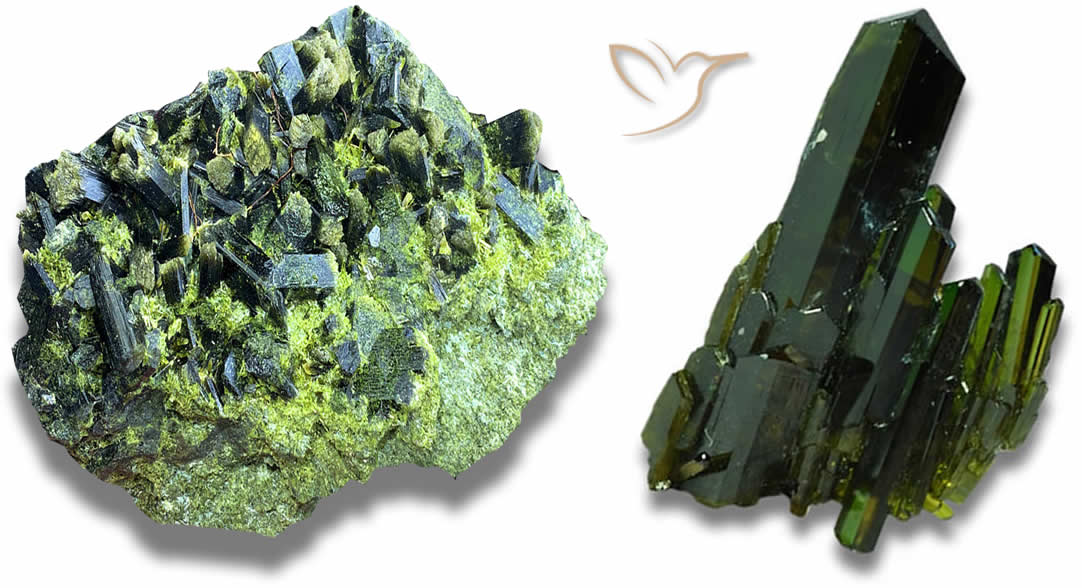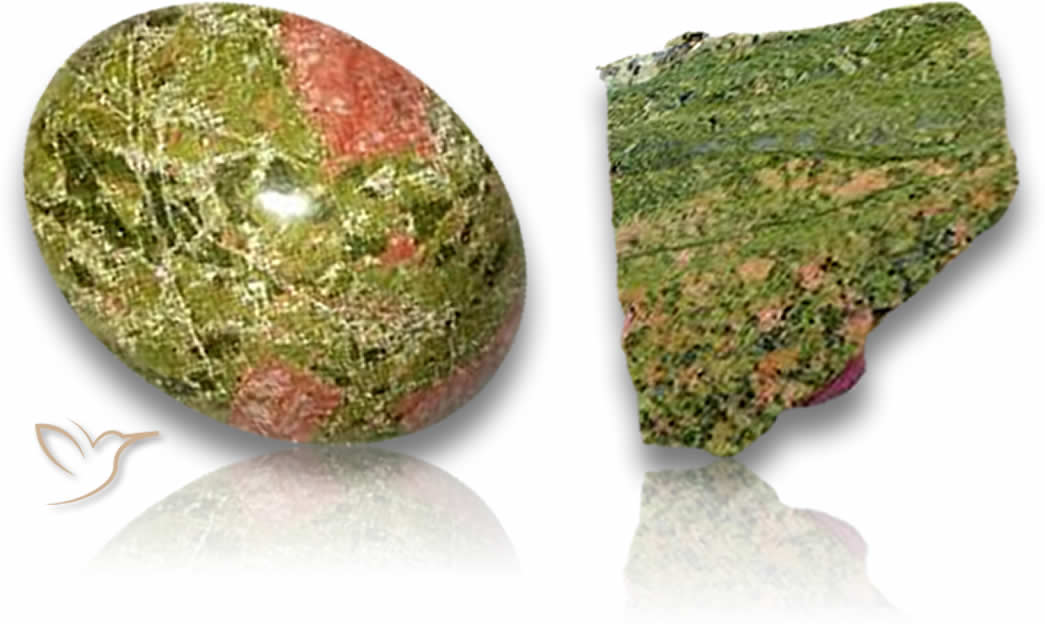Epidote and Unakite: Fascinating Minerals for Gem Enthusiasts

Epidote, a silicate mineral renowned for its unique pistachio green color, is a fascinating subject in the realm of mineralogy. Originally known as pistacite for its distinctive hue, epidote derives its name from the Greek word for "addition", a nod to its numerous crystal faces.
This mineral is often compared to chrome diopside, chrome dravite tourmaline, and idocrase (vesuvianite) due to its dark-green transparent crystals that have been cut as gemstones. By composition, epidote is a complex calcium aluminum iron silicate, ranking 6 to 7 on the Mohs scale. A remarkable feature of epidote is its strong pleochroism, displaying varied colors such as green, brown, and yellow when viewed from different angles. Additionally, its high refractive index (1.729 to 1.768) is comparable to that of pyrope garnet, and it possesses a bright vitreous luster when polished.
Diverse Family of Epidote Minerals
The epidote family includes several related minerals, each with unique properties. Clinozoisite, for instance, is a white or pink variant low in iron and closely related to zoisite. Piemontite presents as an opaque red variety containing manganese, and tawmawite is a dark-green, chromium-bearing type found in Myanmar (Burma).
Deposits of epidote are found in many locations including countries like Sri Lanka (Ceylon), Myanmar (Burma), Brazil, Mozambique, Kenya, Mexico, Austria, Norway, and the USA.
Unakite: A Gemstone with a Natural Mosaic
Unakite, another fascinating mineral, is an altered form of granite comprising epidote, pink orthoclase feldspar, and colorless quartz. Named after the Unakas Mountains in North Carolina, USA, where it was first discovered, unakite is valued for its aesthetic appeal and utility in jewelry and decorative carvings.

Unakite's exceptional polish quality makes it ideal for creating cabochons and ornamental gemstone carvings. It is predominantly found in the United States, but also in Brazil, South Africa, and Sierra Leone.
Key Highlights
- Epidote's characteristics, including its unique color and pleochroism.
- Varieties of epidote like clinozoisite, piemontite, and tawmawite.
- Global locations where epidote is found.
- Description and uses of unakite.
- Geographical distribution of unakite.

